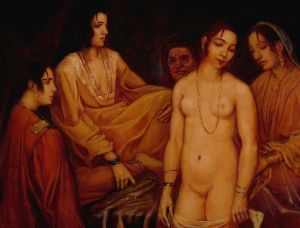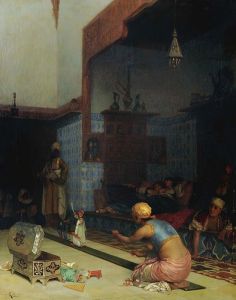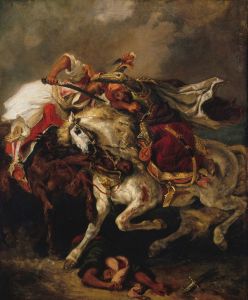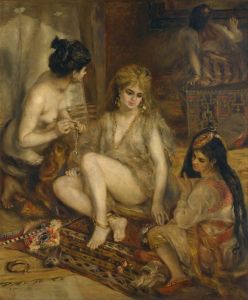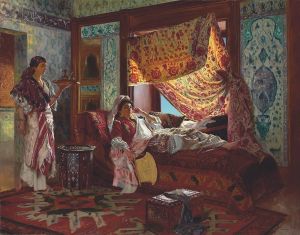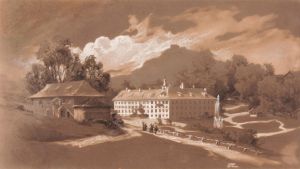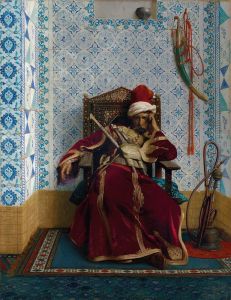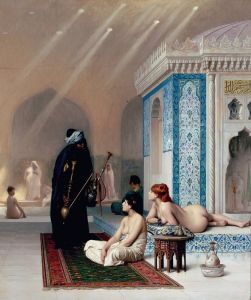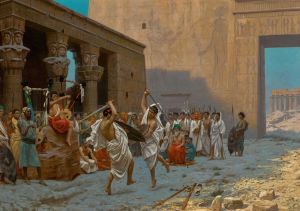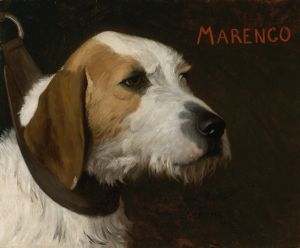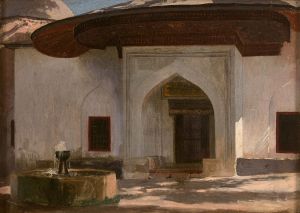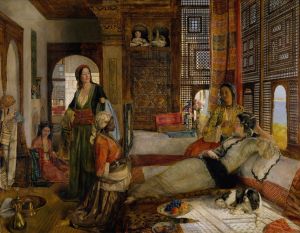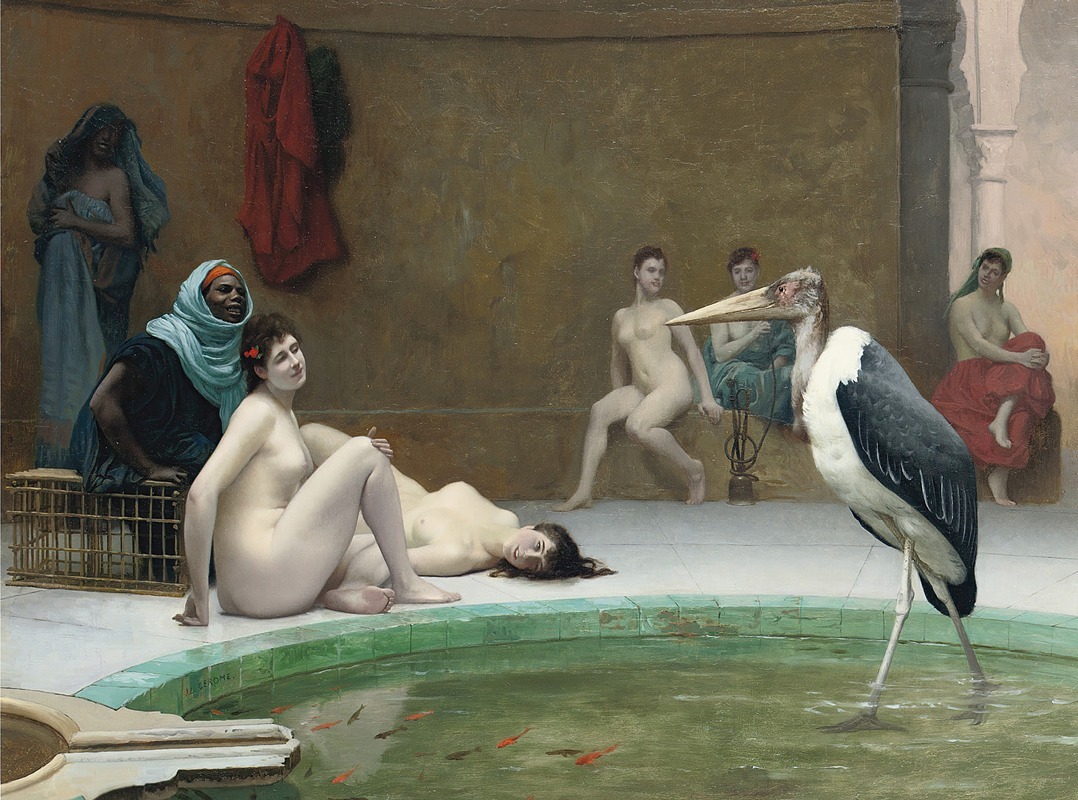
Le Marabout in the Harem bath
A hand-painted replica of Jean-Léon Gérôme’s masterpiece Le Marabout in the Harem bath, meticulously crafted by professional artists to capture the true essence of the original. Each piece is created with museum-quality canvas and rare mineral pigments, carefully painted by experienced artists with delicate brushstrokes and rich, layered colors to perfectly recreate the texture of the original artwork. Unlike machine-printed reproductions, this hand-painted version brings the painting to life, infused with the artist’s emotions and skill in every stroke. Whether for personal collection or home decoration, it instantly elevates the artistic atmosphere of any space.
Jean-Léon Gérôme was a prominent 19th-century French painter and sculptor, known for his academic style and his detailed depictions of historical and Orientalist themes. One of his works, "Le Marabout in the Harem Bath," exemplifies his interest in Orientalism, a genre that romanticized and often stereotyped the cultures of the Middle East and North Africa.
"Le Marabout in the Harem Bath" is a painting that reflects Gérôme's fascination with the exotic and the sensual, common themes in Orientalist art. The painting depicts a scene set in a harem, a private space in a Muslim household reserved for women. The term "marabout" refers to a Muslim religious leader or teacher, often associated with Sufi Islam, who is believed to possess spiritual powers. In this context, the presence of a marabout in a harem bath is an intriguing juxtaposition, as it combines the spiritual with the sensual.
Gérôme's work is characterized by meticulous attention to detail, and "Le Marabout in the Harem Bath" is no exception. The painting likely features intricate architectural elements, luxurious fabrics, and a careful rendering of light and shadow, all of which are hallmarks of Gérôme's style. His ability to create a sense of realism and depth in his paintings was highly regarded, and he often conducted extensive research to ensure the accuracy of the settings and costumes depicted in his works.
The Orientalist movement, of which Gérôme was a part, has been the subject of much critical discussion. While these works were popular in their time for their exotic appeal, they have since been critiqued for perpetuating stereotypes and for their often inaccurate portrayals of Eastern cultures. Gérôme's paintings, including "Le Marabout in the Harem Bath," are seen as products of their time, reflecting the Western fascination with and misunderstanding of the East.
Gérôme's influence extended beyond his paintings. He was a teacher at the École des Beaux-Arts in Paris, where he mentored many students who would go on to become notable artists in their own right. His works were widely exhibited and collected during his lifetime, and he received numerous accolades for his contributions to art.
Despite the controversies surrounding Orientalism, Gérôme's technical skill and his ability to capture the imagination of his audience have ensured his place in art history. His works continue to be studied and appreciated for their artistic merit, even as they are re-evaluated in the context of modern understandings of cultural representation.
"Le Marabout in the Harem Bath" remains a testament to Gérôme's artistic vision and his role in the broader narrative of 19th-century art. While specific details about this particular painting may not be as widely documented as some of his other works, it nonetheless contributes to the rich tapestry of Gérôme's oeuvre and the enduring legacy of Orientalist art.





